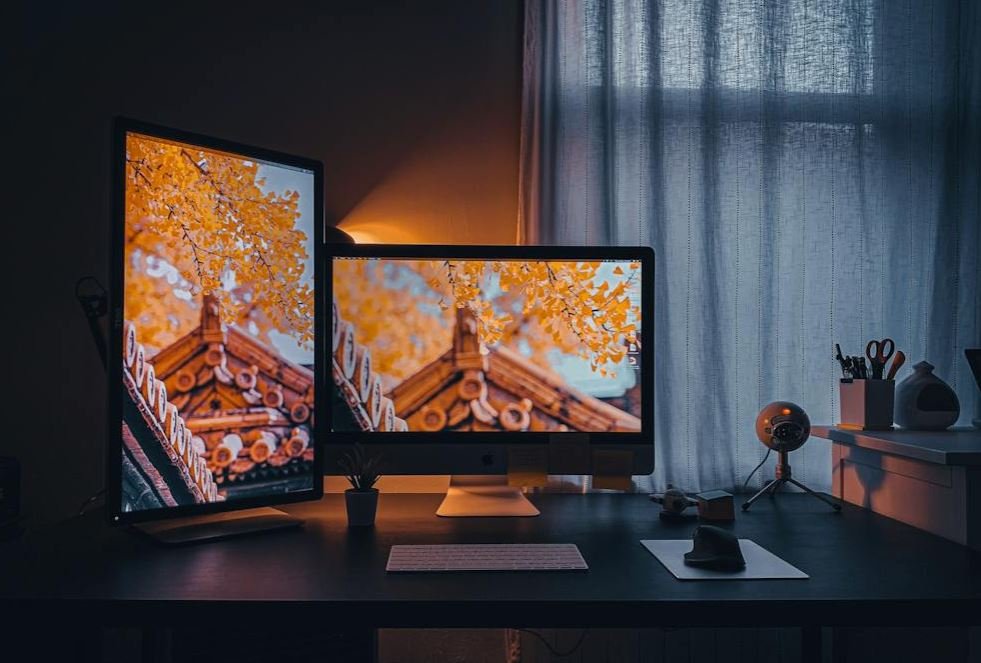How Film Is Developed
Film development is the process by which photographic film is chemically processed to produce negative or positive images.
Key Takeaways
- Film development is the chemical process used to produce photographic images.
- The process involves several steps, including loading the film, developing, fixing, rinsing, and drying.
- During development, the exposed silver halide crystals in the film are chemically converted into metallic silver, forming the image.
- Black and white film and color film require different development techniques.
Step 1: Loading the Film
The film is carefully loaded into a light-sealed development tank or reel to prevent exposure to light, which could ruin the images.
It is important to handle the film in a darkroom or changing bag to ensure that it is not exposed to light.
Step 2: Developing
The film is immersed in a developing solution, which triggers a chemical reaction that reveals the latent image captured by the light-sensitive silver halide crystals.
The development time can vary depending on the type of film and the desired level of contrast and graininess in the final images.
Step 3: Fixing
The film is then transferred to a fixer solution, which removes the unexposed and undeveloped silver halide crystals from the film, making the image permanent.
Fixing is essential to prevent further exposure of the silver halide crystals to light, as it can darken the entire film.
Step 4: Rinsing
After fixing, the film is rinsed thoroughly with water to remove any remaining chemicals.
Rinsing ensures that no residual developer or fixer solution remains, which could negatively affect the quality and lifespan of the images.
Step 5: Drying
Finally, the film is allowed to dry in a dust-free environment, or it can be dried using special equipment.
Drying the film properly is crucial to prevent damage or distortion of the images.
Black and White Film vs. Color Film
While the basic film development process is similar for both black and white film and color film, there are some differences:
- Black and white film only requires a developer and fixer solution, whereas color film requires additional chemical steps to develop the different color layers.
- Color film development involves separate development of each color layer (cyan, magenta, and yellow), followed by a process called dye coupling to produce the final colored image.
- The development time and temperature also differ between black and white film and color film.
Interesting Facts about Film Development
| Fact | Description |
|---|---|
| First Film Patent | In 1884, George Eastman patented the first practical roll film, revolutionizing the photographic industry. |
| Analog vs. Digital | With the rise of digital photography, the demand for film development has significantly decreased, but it is still favored by some professional photographers and enthusiasts for its unique characteristics and aesthetic appeal. |
Despite the advancements in digital photography, film development remains an important process for those who appreciate the timeless beauty and tangible nature of physical photographs. Whether it’s black and white film or color film, the development process is essential to transform the captured moments into lasting memories. So, the next time you look at an old photo, remember the intricate process it went through to become a cherished keepsake.
Sources
- https://www.bhphotovideo.com/explore/photography/tips-and-solutions/developing-35mm-film
- https://en.wikipedia.org/wiki/Film_processing

Common Misconceptions
Paragraph 1: Understanding the film development process
Many people have misconceptions about how film is developed in the photography industry. Contrary to popular belief, it is not as simple as just dropping off the film and getting prints. Here are three common misconceptions:
- Film development is just printing: Film development is not just about printing the images onto paper. It involves a complex series of chemical reactions to create the final image.
- All film is developed the same way: There are different types of film, such as color negative film, black and white film, and slide film. Each type requires a specific development process.
- You can develop film at home with basic equipment: While it is possible to develop film at home, it requires specialized equipment and knowledge of the process. It is not as simple as developing a roll of 35mm film in a darkroom.
Paragraph 2: The role of a darkroom and chemicals
Another common misconception related to film development is the notion that a darkroom is obsolete and that chemicals are no longer necessary. Here are three common misunderstandings:
- Digital scanning replaces the need for a darkroom: While digitizing film has become common, a darkroom remains crucial for certain processes, such as printing traditional black and white prints.
- Chemicals are harmful and can be replaced with digital editing: While digital editing has advanced significantly, it cannot completely replace the chemical process. Developing film remains essential for the best results in terms of tonal range and overall aesthetics.
- Chemical processing is straightforward: Film development involves precise control of developer solutions, fixers, and other chemicals. Accurate timing and temperature are crucial to achieve desired results.
Paragraph 3: Potential risks during film development
People often underestimate the potential risks involved in film development. Here are three common misconceptions:
- Overdeveloping film enhances the image quality: Overdevelopment can result in loss of highlight information and increased graininess in the final image.
- Underdeveloping film is an easy fix with digital editing: While digital editing may help salvage some underexposed images, proper development is still critical to achieve the best quality possible.
- Developing film is foolproof: Film development requires precision and careful handling of chemicals and equipment. Even the smallest errors can lead to ruined film or poor image quality.
Paragraph 4: Film development and processing time
Many people have misconceptions about the time required for film development. Here are three common misunderstandings:
- Instant results: Contrary to the immediacy of digital photography, film development is a process that takes time. It can range from hours to days, depending on the lab or home setup.
- Quality results require longer processing times: While longer development times can be beneficial for certain film types, proper development relies more on precise timing and chemical control rather than extended processing times.
- Processing time is the same for all labs: Different labs have different turnaround times for film development. It is important to consider this when selecting a lab for your film processing needs.

As technology continues to advance, the process of developing film has become less common in the digital age. However, understanding how film is developed gives us a glimpse into the fascinating history of photography and the art of capturing images on film. The following tables provide intriguing data and information about various aspects of film development.
1. Film Types and Formats
Film Types | Formats
— | —
Negative | 35mm, 120mm, 4×5 inch
Reversal | 16mm, Super 8mm, 8mm
Instant | Fujifilm Instax Wide, Polaroid 600
In this table, we explore different film types and their corresponding formats. Negative films are commonly used for professional photography, while reversal films produce positive images directly.
2. Chemical Components
Component | Function
— | —
Silver halide crystals | Capture light and form latent image
Developer solution | Reduces exposed silver halide crystals to metallic silver
Bleach solution | Removes undeveloped silver halide crystals
Fixer solution | Makes the image stable and washes away remaining silver halide crystals
Wetting agent | Prevents water spots during drying
These chemical components play crucial roles in the film development process. Each component serves a unique function to bring the image to life.
3. Development Stages
Stage | Description
— | —
Exposure | Light passes through the lens, forming a latent image on film.
Development | Developer solution reduces exposed silver halide crystals to create a visible image.
Stop bath | Halts development process using a weak acid solution.
Fixation | Fixer solution stabilizes the image and removes remaining silver halide crystals.
Washing | Film is thoroughly rinsed to remove all residual chemicals.
Drying | The film is dried before further handling or printing.
This table outlines the different stages involved in developing a film. Each stage is crucial to produce a high-quality image.
4. Film Development Times
Film Type | Development Time (mins)
— | —
Black and white | 5-12 minutes
C-41 color | 3-4 minutes
E-6 slide film | 6-8 minutes
Different film types require varying development times. Black and white film generally takes longer to develop than color film.
5. Development Temperatures
Process | Recommended Temperature (°C)
— | —
Black and white | 20-24°C
C-41 color | 38-41°C
E-6 slide film | 38-41°C
Maintaining the correct development temperature is crucial to ensure accurate results. Slight variations in temperature can impact the final image.
6. Film Development Techniques
Technique | Description
— | —
Push processing | Extending development time to increase film sensitivity
Pull processing | Shortening development time to decrease film sensitivity
Cross processing | Developing a film in the wrong chemical solution
Stand development | Minimal agitation during development for increased image detail
Film development techniques allow photographers to achieve unique effects and manipulate the images based on their creative vision.
7. Film Development Equipment
Equipment | Description
— | —
Film developing tank | Holds the film roll and chemicals during the development process
Thermometer | Measures the temperature of the developer solution
Film dryer | Dries the film after the development process
Measuring cylinders | Used for accurate chemical measurements
Film clips | Secure the film during drying
These essential equipment pieces are necessary for successful film development. Each item serves a specific purpose in the overall process.
8. Developing Film at Home vs. Lab
Aspect | Home Development | Lab Development
— | — | —
Cost | Lower cost due to self-performing tasks | Higher cost as professionals facilitate the process
Control | Complete control over the development process | Dependence on lab technician expertise
Accuracy | Greater potential for human error | Consistent and standardized results
Convenience | Requires setup and cleaning at home | Drop-off and pick-up service provided by the lab
By comparing home film development to lab development, photographers can decide which option suits their needs best based on factors like cost, control, accuracy, and convenience.
9. Film Development Hazards
Hazards | Precautions
— | —
Chemical exposure | Wear gloves and protective clothing
Chemical mixing | Ventilation in the workspace
Temperature control | Monitor the development temperature
Light leaks | Use a darkroom or lightproof changing bag
Ensuring safety during film development is crucial. These precautions help minimize potential hazards and protect both the photographer and the film.
10. Transition to Digital Photography
Year | Significant Milestone
— | —
1935 | First practical electronic television system
1975 | Introduction of the digital camera
1990 | Creation of the JPEG image format
2000 | High-resolution digital cameras become widely available
2010 | Smartphone cameras become dominant
This table highlights significant milestones marking the transition from film to digital photography. The advancements in technology revolutionized how we capture, store, and share photographs in the modern world.
In conclusion, film development is a fascinating process that involves various steps, tools, and chemicals. While the digital age has brought about remarkable advancements in photography, understanding how film is developed allows us to appreciate the rich history and art behind it. Each table provided unique insights into different aspects of film development, shedding light on the techniques, equipment, hazards, and the transition to digital photography.
Frequently Asked Questions
What is film development?
Film development is the process of transforming exposed photographic film into negatives or positives, which can then be viewed or printed.
How does film development work?
During film development, the film is immersed in a series of chemical baths that help remove the light-sensitive silver halides from the film and fix the image. This process preserves the image while making it visible for further use.
What chemicals are used in film development?
Common chemicals used in film development include developer, stop bath, fixer, and occasionally a stabilizer. These chemicals work together to bring out the image, halt the development process, fix the image, and stabilize the film.
How long does film development take?
The duration of film development can vary depending on the type of film and the specific development method used. Generally, it takes around 1 to 2 hours from start to finish, including drying time.
Can film be developed at home?
Yes, film can be developed at home by setting up a darkroom and using the necessary equipment and chemicals. Home development allows for more control and customization of the process, but it requires a certain level of expertise and proper handling of chemicals.
Can you develop color film at home?
Developing color film at home is more complex than black and white film development due to the additional steps and temperature control requirements. However, it is possible with the right equipment, chemicals, and knowledge.
How many times can a film negative be developed?
Film negatives can be developed multiple times as long as they are properly stored and handled. The quality of the subsequent developments may degrade with each subsequent process, so it is recommended to make copies or scans of important negatives to preserve their quality.
What is a darkroom in film development?
A darkroom is a light-sealed room or space used for film development and printing. It provides the necessary environment for working with light-sensitive materials without exposing them to unwanted light sources.
How do you know when film is fully developed?
During film development, the photographer or technician visually inspects the film to determine when it is fully developed. This is usually done by checking the density and contrast of the image. Experience and familiarity with the film type are essential in determining the optimal development time.
What are the risks of improper film development?
Improper film development can result in various issues such as underdevelopment, overdevelopment, improper fixing, or inadequate washing. These issues can lead to poor image quality, loss of fine details, color shifts, uneven development, or even irreversible damage to the film.




